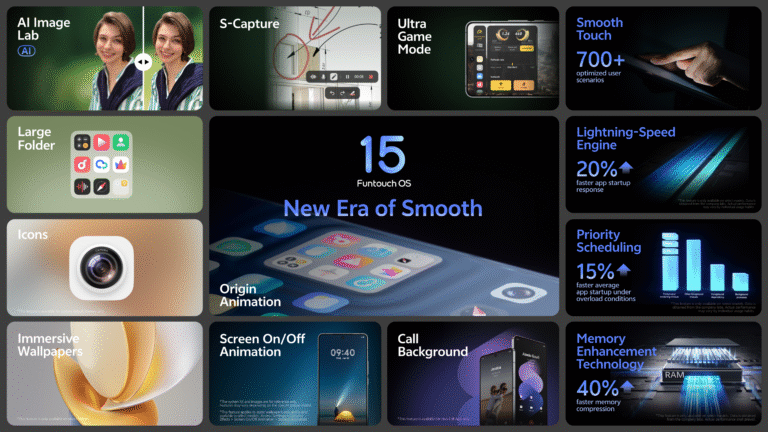
Officially announcing that the newest Shark Tank India season will be his last, Aman Gupta, co-founder and Chief Marketing Officer (CMO) of boAt, has Being among the most well-known investors on the show, his leaving represents a major change for the reality TV show as well as for the top consumer electronics company in India, boAt.
For advertisement on our platform, do call at +91 6377460764 or email us at contact@thephilox.com.
Gupta’s choice results from his desire to give boAt, which has lately been struggling with financial difficulties including dropping sales and shrinking market share, all his whole attention.
Gupta has been instrumental in forming Shark Tank India by providing young businesspeople financial support and mentoring.
Apart from helping businesses, his appearance on the show has enhanced his own brand. But he now feels that the present status of boAt calls for his whole attention, which drives him to decide to leave the program.
This paper explores Aman Gupta’s entrepreneurial path, boAt’s most recent financial results, and the strategic steps the business is taking to negotiate future obstacles.
The Entrepreneurial Journey of Aman Gupta: From Failures to Success with BoAt
The account of Aman Gupta is one of tenacity and fortitude. He had several commercial disappointments before co-founding boAt in 2016.
Gupta came clean in an interview and said he had to close five businesses before discovering success with boAt. Still, these encounters gave him the knowledge and will needed to create a strong consumer electronics firm.
BoAt was founded with a goal of offering Indian consumers fashionable, robust, reasonably priced audio devices.
BoAt became well-known in India’s consumer electronics sector fast thanks to aggressive marketing, celebrity sponsorships, and thorough awareness of market trends.
The brand today provides a wide spectrum of goods, including smartwatches, headphones, earbuds, and other wearables.
But following years of explosive expansion, boAt has faced major financial and operational challenges that call for Gupta’s full-time dedication to guide the business into stability.
Financial Performance of boAt in FY24: Mixed Bag
For boAt, the fiscal years 2023–2024 (FY24) have presented difficult times. From ₹3,285 crore in FY23 to ₹3,122 crore in FY24, the company said revenue dropped by 5%.
This revenue decline stands in sharp contrast to the company’s past development path, which saw constant annual increase.
Positively, boAt effectively lowered its net loss by about 47%, reducing it down to ₹70.8 crore from ₹129.4 crore in the past fiscal year despite dropping revenues.
The business reached this by streamlining expenses, raising operational effectiveness, and reducing too high spending.
Indicating better unit economics, boAt also noted a return to positive EBITDA ( Earnings Before Interest, Taxes, Depreciation, and Amortization) in FY24.
Still, the corporation has urgent issues with regard to market share, competitiveness, and diminishing wearable demand.
Wearables Market Challenges and Falling Sales
For boAt, the wearables market has been a major source of income; yet, demand has since declined.
With shipments plummeting 10% in the June 2024 quarter to 29.5 million units, the Indian wearables market witnessed its first-ever dip, per a report by the International Data Corporation (IDC).
Several elements have helped to explain this downturn, including:
- Many consumers already have wearables, which lowers demand for fresh devices.
- Excess Inventory: Inventory pile-ups resulting from an excess of unsold earlier models have resulted from
- Many wearable companies—including boAt—have battled to bring fresh ideas, which makes it more difficult to stimulate new sales.
Reflecting lower consumer expenditure and growing competitiveness, boAt’s domestic revenue fell to ₹3,101.2 crore in FY24 from ₹3,279 crore in FY23.
International revenue, which dropped by almost 89% from ₹124.3 crore in FY23 to ₹13.8 crore in FY24, fell most alarmingly though.
This sharp decline suggests that boAt is having difficulty firmly establishing a presence in foreign markets.
Rising Market Share Erosion and Increasing Competition
With so many native and foreign firms vying for supremacy, India’s consumer electronics market has grown very competitive.
Although boAt used to be a market leader, more recent manufacturers with cutting-edge technologies and reasonable prices have become fierce rivals.
Market data indicate that boAt’s market share dropped by 9.8% year over year in shipments. Several major rivals include:
- Noise: Another Indian brand becoming rather popular in the smart wearable market.
- OnePlus: Renowned for its luxury but reasonably priced audio systems.
- Realme and Xiaomi: Globally active players fiercely entering the Indian market.
- Emerging brands catching market share with aggressive pricing and features are Fire-Boltt and Boult Audio.
BoAt is under pressure to stand out from the increasing competition by means of creativity, branding, and deliberate pricing.
Methodical Approaches to Overcome Obstacles
BoAt has launched various strategic projects aiming at stabilizing and enhancing its performance in order to address these operational and financial difficulties. among these are:
1. Profitability and Cost Optimizing Focus
By cutting advertising and promotional costs, boAt has optimized its marketing allocation.
To save warranty and running expenses, the corporation has simplified its supply chain.
Improving efficiency has helped boAt return to profitability with positive EBITDA in FY24.
2. Developing R&D and Product Innovation
BoAt is funding R&D to introduce feature-rich, next-generation products in order to offset the lack of creativity.
The company wants to present cutting-edge wearables with unique health-tracking capabilities, longer battery life, and artificial intelligence integration.
3. Consolidating Outside Wearables and Audio
BoAt is investigating fresh product lines like smart home appliances and gaming accessories.
Diversification will assist to lessen dependency on the erratic wearable market.
4. Improving Global Profile
Though foreign sales have dropped dramatically, boAt intends to re-enter world markets via better techniques.
Reaching its global presence, the corporation is concentrating on Middle Eastern, Southeast Asian, and European markets.
5. Making use of offline expansion and E-commerce
BoAt keeps enhancing its presence on internet markets such Amazon and Flipkart.
To further customer reach, the firm is also increasing its offline retail presence.
Aman Gupta’s leaving Shark Tank India: A calculated action
Aman Gupta left Shark Tank India not only on a personal choice but also a calculated commercial one.
Although his appearance on the show helped boAt’s profile and personal brand, the company’s present problems call for his whole-time leadership and strategic direction.
- 1. Gupta hopes to: 1. Emphasize boAt’s core business and innovation by leaving the show.
- 2. Solve problems in the market and increase income.
- 3. Restitute boAt’s hegemony in the consumer electronics market.
The Way BoAt Ahead
Aman Gupta’s choice to leave Shark Tank India highlights his will to bring boAt back to life in face of financial and competitive constraints. BoAt is a solid brand with great market potential even with the current challenges.
BoAt is positioned to negotiate the challenging market conditions with a fresh attention on innovation, cost optimization, and strategic expansion.
Should Gupta and his group carry out their plans with success, boAt may recover its leadership in the consumer electronics sector of India and project a more global profile.
One thing is certain: Gupta is driven to guide boAt into a strong and rich future; only time will tell if his audacious choice pays off.
Stay Connected and Share Your Stories
For all those inspired by stories of resilience and ambition, follow us on X/Twitter and on Instagram . For those with untold stories that you would love to share, please send them to contact@thephilox.com






